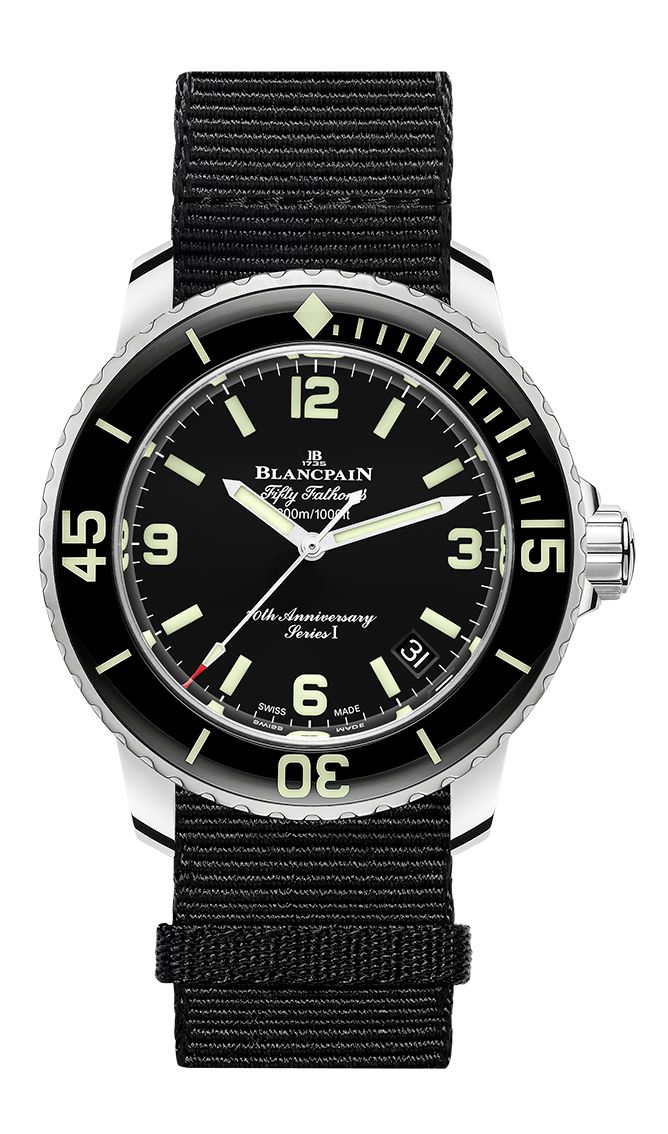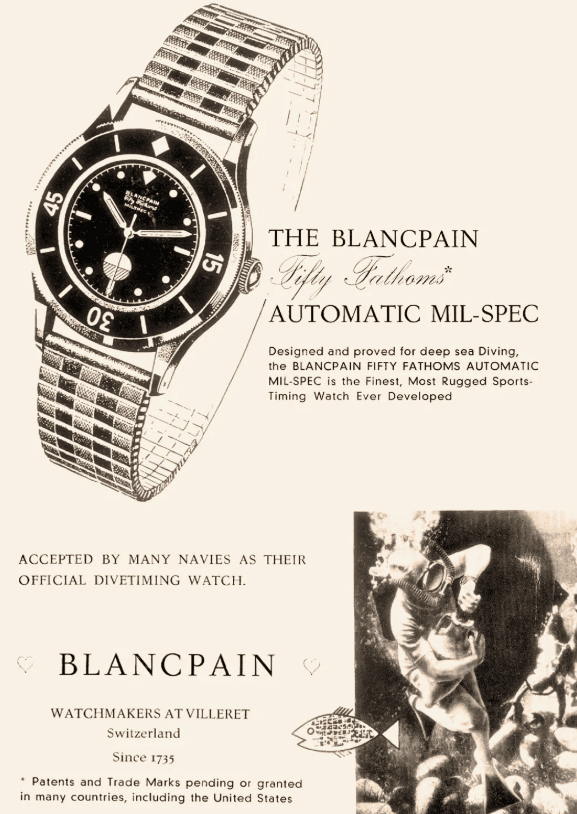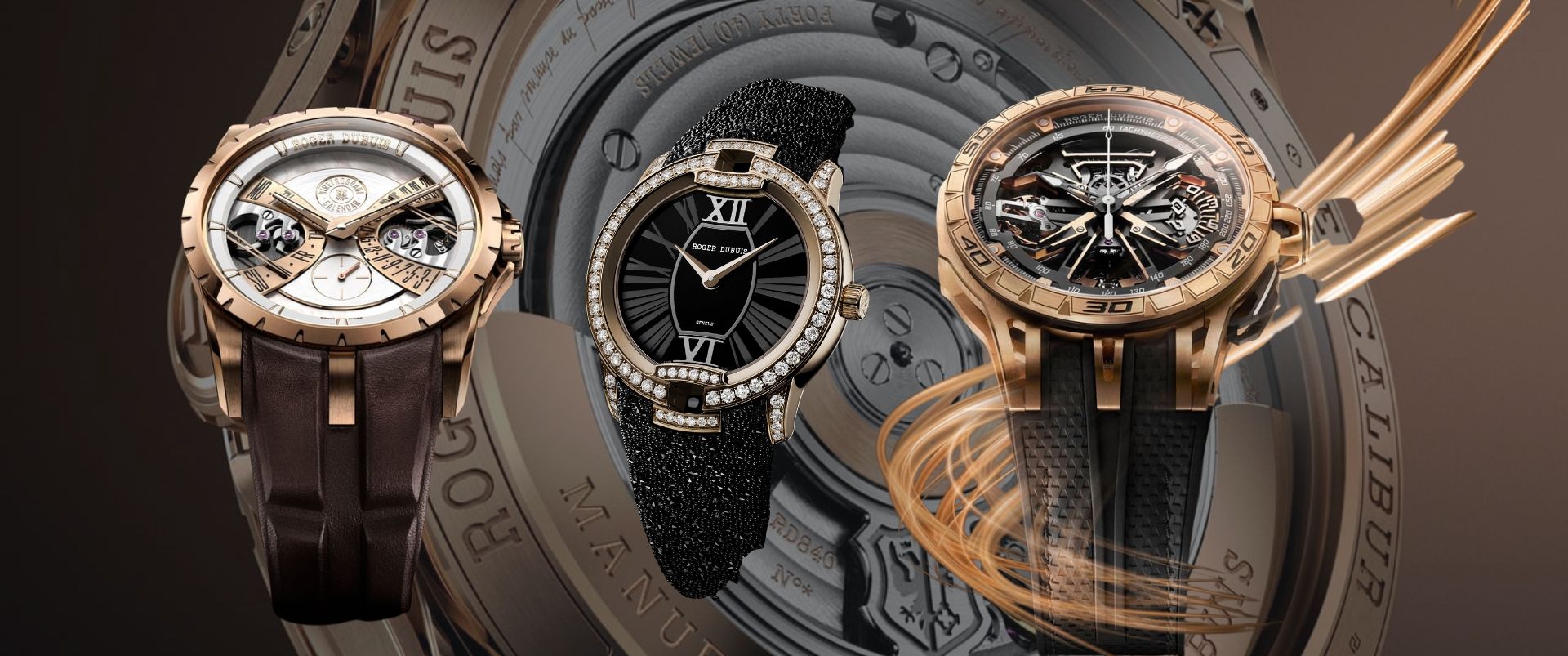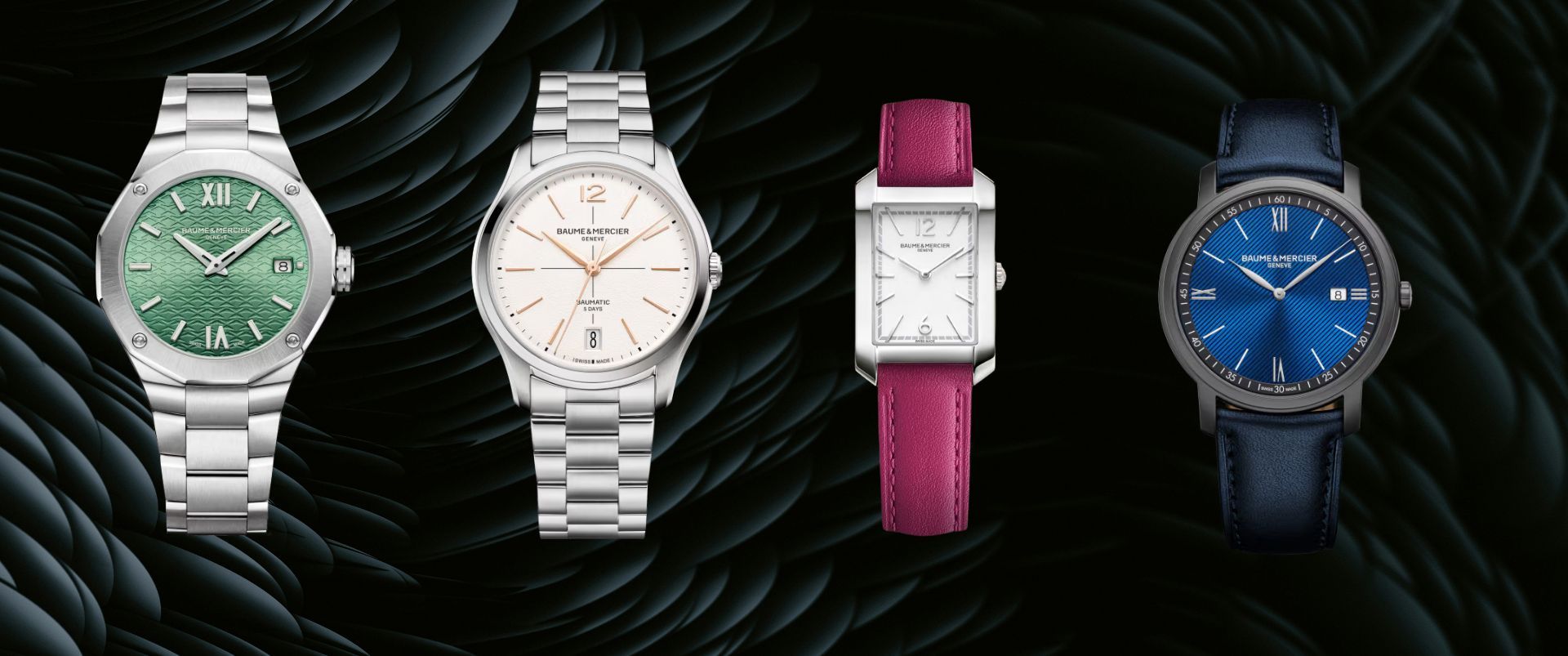Blancpain Fifty Fathoms History: 71 Years Of Dive Watch Innovation
Seventy-one years ago, Jean-Jacques Fiechter descended into the depths of Lake Geneva with a revolutionary timepiece strapped to his wrist. What emerged from those formative underwater trials would fundamentally alter the trajectory of horological history, establishing not merely a watch, but the very blueprint upon which all subsequent dive timepieces would be measured. The Blancpain Fifty Fathoms, born in 1953, stands as horology's most consequential underwater instrument—the world's first true modern diving watch.
Genesis of the Deep: 1953
The story begins with Fiechter, Blancpain's visionary CEO and passionate diving enthusiast, who recognized the nascent sport of scuba diving's critical need for reliable timekeeping. In the early 1950s, as Jacques Cousteau's Aqua-Lung was revolutionizing underwater exploration, divers relied on rudimentary timing methods—a potentially fatal limitation in an environment where precise time measurement determined survival.
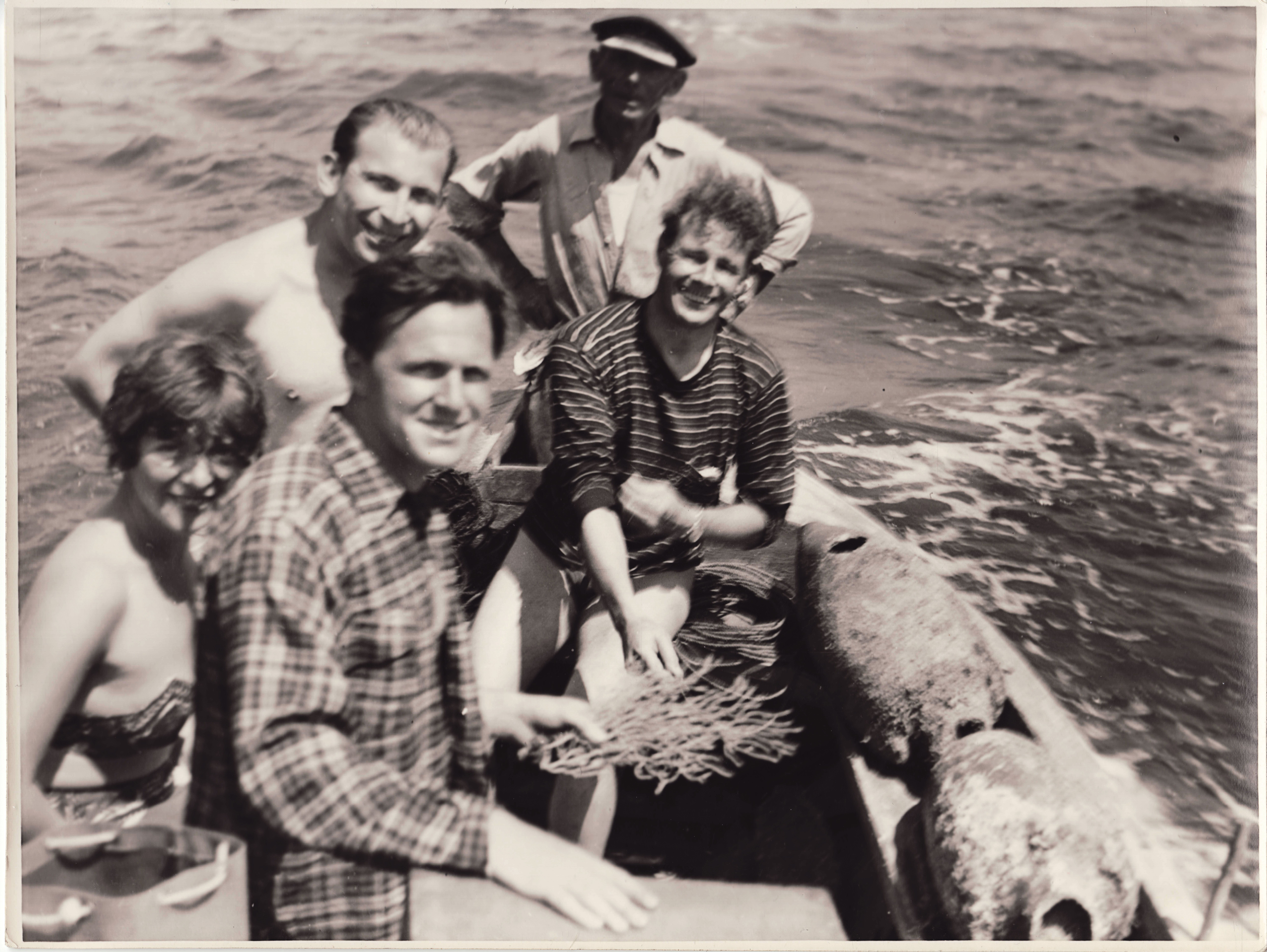
Fiechter's genius lay not in incremental improvement, but in comprehensive reimagining. The original Fifty Fathoms established five fundamental principles that would define diving watches for generations: water resistance to 50 fathoms (91.45 meters), a unidirectional rotating timing bezel, maximum dial legibility, antimagnetic protection, and automatic winding capability. This constellation of features, appearing together for the first time, transformed the diving watch from concept to reality. The inaugural model featured a 37mm stainless steel case housing Blancpain's Caliber 1315, a robust automatic movement that could withstand the rigors of underwater exploration. The bidirectional bezel—a critical safety feature that would become the standard—prevented accidental adjustment that could lead to potentially dangerous miscalculations of remaining air supply.
Military Adoption and the MIL-SPEC Era
The Fifty Fathoms' transition from civilian tool to military instrument marked its transformation into legend. French combat divers were among the first to adopt the watch, recognizing its operational superiority. More significantly, the timepiece caught the attention of the U.S. Navy's Underwater Demolition Teams, precursors to the modern Navy SEALs. The military specification version, known as the MIL-SPEC, incorporated specific requirements demanded by naval operations. These watches bore the designation "US Navy" on their dials and featured enhanced humidity resistance through modified case construction. The MIL-SPEC models became standard issue for American naval divers, establishing the Fifty Fathoms as the definitive professional diving instrument. Simultaneously, Blancpain licensed production to various international partners, creating regional variants that spread the Fifty Fathoms' influence globally. The German market saw Barakuda-branded versions, while other European markets received watches bearing local distributor markings—each maintaining the core DNA of Fiechter's original design.
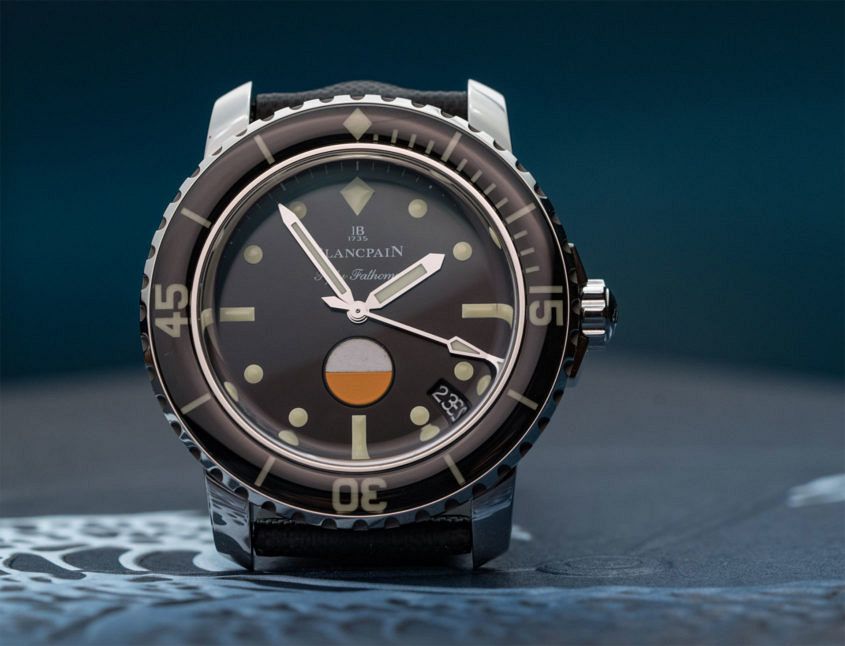
The Tornek-Rayville Chapter: 1964-1980
One of the most fascinating chapters in Fifty Fathoms history involves the Tornek-Rayville brand, established specifically to supply the U.S. military with diving watches. Allen Tornek, a New York-based watch importer, partnered with Rayville Watch Company to create watches using Blancpain movements and cases, specifically for American military contracts. These Tornek-Rayville watches, powered by Blancpain's renowned movements, served various branches of the U.S. military throughout the 1960s and 1970s. The most sought-after variants include the TR-900 series, which maintained the essential Fifty Fathoms characteristics while meeting stringent military specifications for accuracy, durability, and reliability.
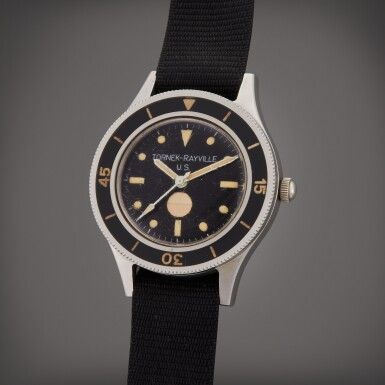
Evolution Through the Decades: 1960s-1980s
The 1960s witnessed significant technical advancement in the Fifty Fathoms line. Blancpain introduced improved case sealing technologies, enhanced luminous materials for better underwater visibility, and refined movement construction for greater shock resistance. The brand also expanded the collection with different case sizes and dial configurations, responding to diverse user requirements from recreational divers to professional naval personnel. Throughout the 1970s, as the quartz crisis devastated the Swiss watch industry, Blancpain's commitment to mechanical watchmaking never wavered. The Fifty Fathoms continued evolving, incorporating technological improvements while maintaining its fundamental character. This period saw enhanced water resistance ratings and improved metallurgy in case construction.
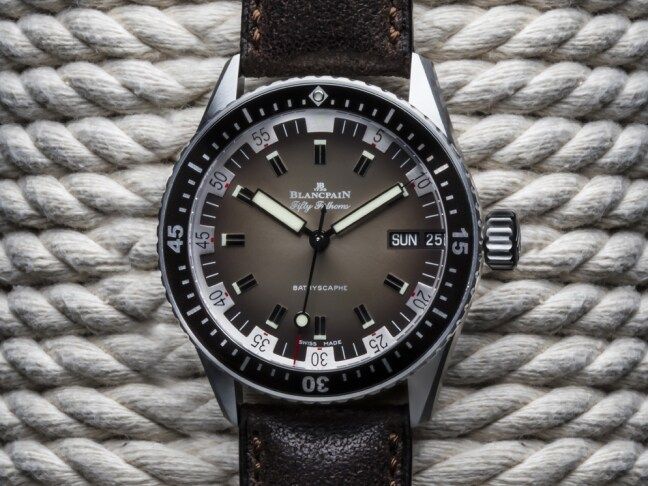
The Swatch Group Renaissance: 1992-Present
Following Blancpain's acquisition by the Swatch Group in 1992, under the stewardship of Jean-Claude Biver and subsequently Marc A. Hayek, the Fifty Fathoms experienced unprecedented renaissance. The brand's new leadership recognized the historical significance of the collection and embarked on a comprehensive modernization program that honored its heritage while embracing contemporary horological advancement. The modern era began with the 2003 relaunch, commemorating the Fifty Fathoms' 50th anniversary. This wasn't merely nostalgic recreation but thoughtful evolution, incorporating modern materials science, advanced manufacturing techniques, and enhanced movement technology while preserving the aesthetic and functional principles that made the original revolutionary.
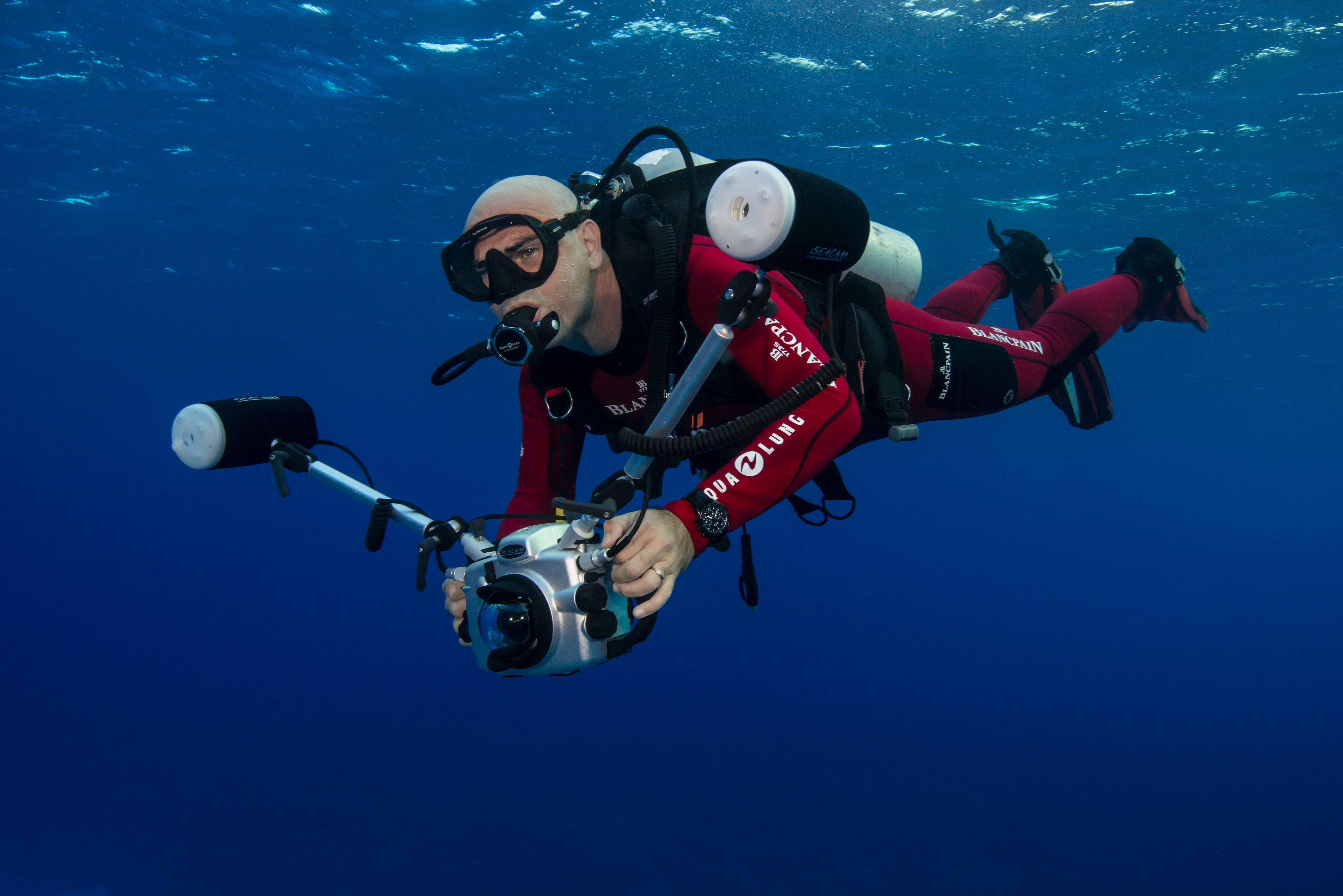
Technical Evolution: Movement Mastery
The heart of every Fifty Fathoms has been its movement technology. The early models utilized modified versions of existing Blancpain calibers, but the modern era has seen development of purpose-built movements specifically designed for diving applications. The current Caliber 1315 represents the culmination of decades of refinement. This 3Hz automatic movement provides 120-hour power reserve, features silicon components for enhanced antimagnetic properties, and incorporates advanced shock protection. The movement's construction reflects diving-specific requirements: sealed case back prevents moisture intrusion, robust winding system withstands environmental stress, and precision regulation ensures timing accuracy under pressure.
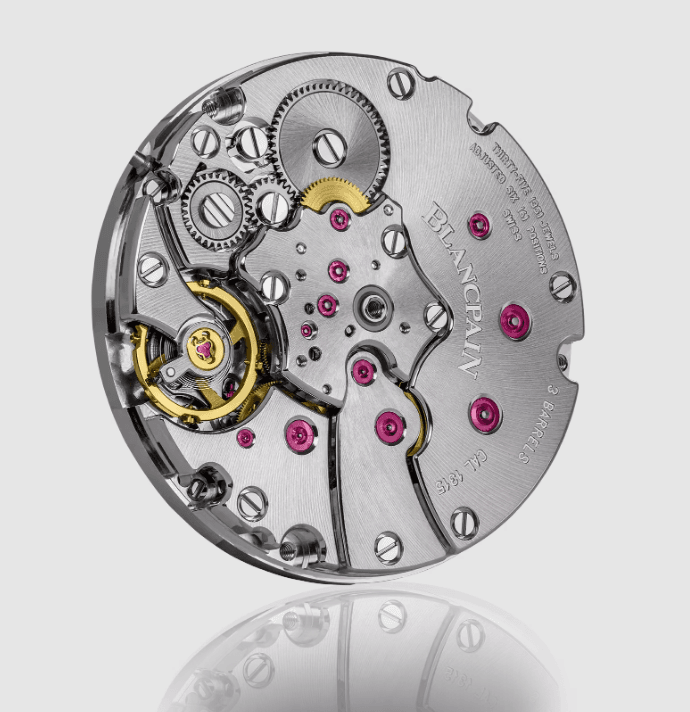
Contemporary Collection: Technical Specifications
Today's Fifty Fathoms collection encompasses multiple size options and material choices, each maintaining the essential characteristics that defined the original while incorporating modern horological advancement. The standard Automatique models are available in 38mm, 42mm, and 45mm case sizes, addressing diverse wrist requirements and aesthetic preferences. Case materials include stainless steel, titanium, and precious metals, each offering specific advantages for different diving applications. Water resistance across the collection ranges from 300 meters (standard models) to 1000 meters (professional variants), far exceeding the original 50-fathom specification while maintaining the collection's foundational safety principles. The unidirectional timing bezel remains a central feature, now incorporating advanced materials like ceramic or hardened steel for enhanced durability. Modern dial technology ensures optimal legibility in challenging underwater conditions. Super-LumiNova applications provide enhanced visibility, while dial layouts maintain the clean, functional aesthetic that has characterized the collection since 1953.
2025 Launches: Expanding the Legacy
The 2025 model year has seen significant expansion of the Fifty Fathoms collection, demonstrating Blancpain's continued commitment to innovation within traditional frameworks.
-Fifty Fathoms Automatique 38mm Collection: The introduction of 38mm cases represents a calculated response to contemporary preferences for more proportioned timepieces. These models are available in stainless steel, titanium, and red gold variants, each offered with black or blue dial options. The smaller case size required comprehensive re-engineering of proportions to maintain visual presence and functional effectiveness.
-Fifty Fathoms Tech Collection Evolution: Building on the success of previous Tech models, 2025 has seen introduction of the Fifty Fathoms Tech Ref. 5029, a 45mm titanium construction that represents Blancpain's vision of contemporary diving watch design. This model incorporates advanced materials, enhanced water resistance, and innovative bezel technology while maintaining connection to the original's functional philosophy.
-Ocean Commitment IV Tech: Continuing Blancpain's environmental advocacy, this limited edition combines advanced horological technology with conservation messaging, reinforcing the brand's commitment to ocean protection initiatives.
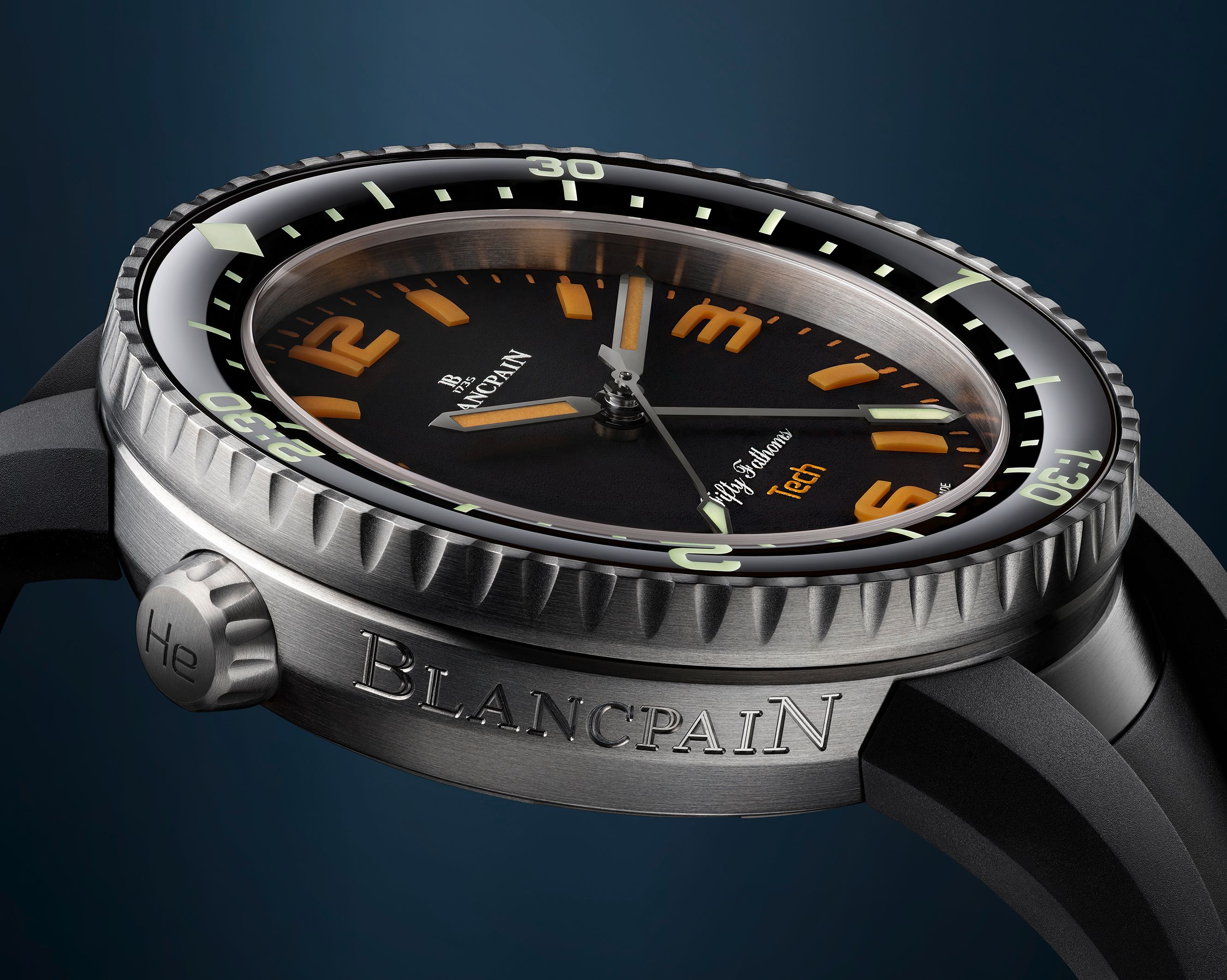
Manufacturing Excellence: Swiss Precision
Every Fifty Fathoms is manufactured entirely in-house at Blancpain's Le Brassus facility, ensuring complete control over quality and precision. The production process combines traditional Swiss craftsmanship with advanced manufacturing technology, creating timepieces that meet the most demanding performance requirements. Case construction utilizes state-of-the-art machining techniques to achieve precise tolerances essential for water resistance integrity. Movement assembly follows traditional Swiss protocols, with individual components hand-finished and assembled by master watchmakers. Each completed watch undergoes comprehensive testing that exceeds industry standards, including pressure testing, timing verification, and functional assessment.
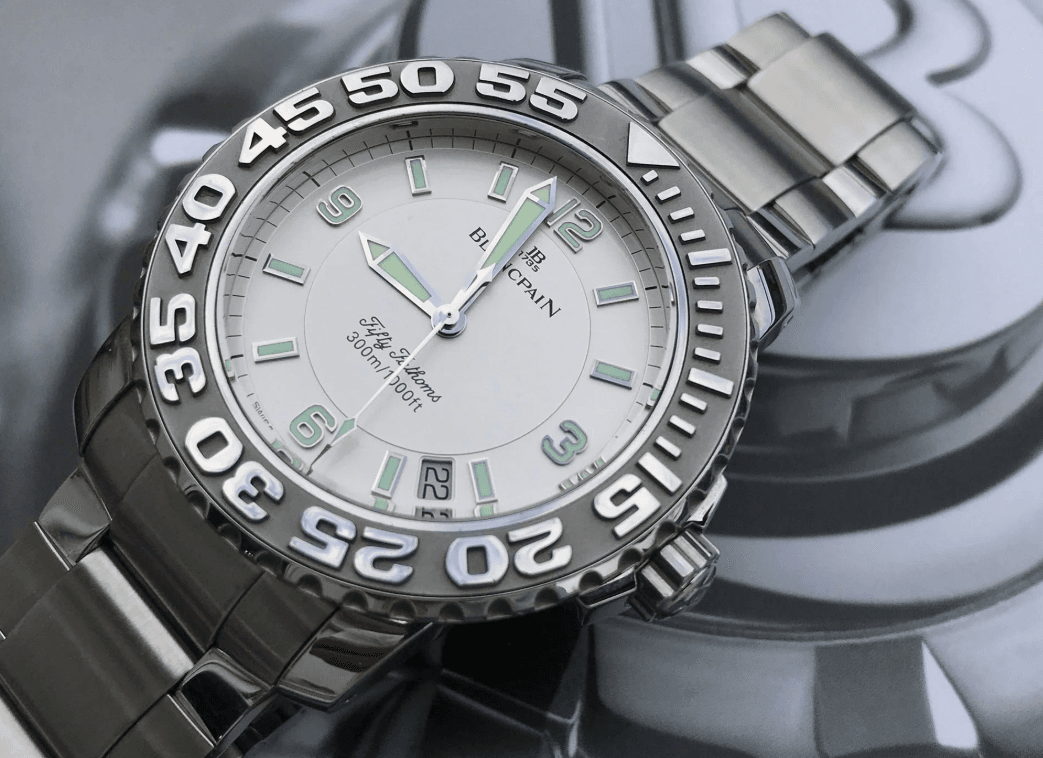
Cultural Impact and Collecting
The Fifty Fathoms' influence extends far beyond horological circles, having become a cultural icon representing adventure, exploration, and technical excellence. Vintage models, particularly early MIL-SPEC variants and Tornek-Rayville pieces, command significant collector interest and premium pricing. The watch's appearance in various films and association with notable explorers has enhanced its mystique, while its continued use by professional divers maintains its credibility as a serious tool watch. This dual character—functional instrument and cultural symbol—reflects the enduring appeal that has sustained the collection across seven decades.
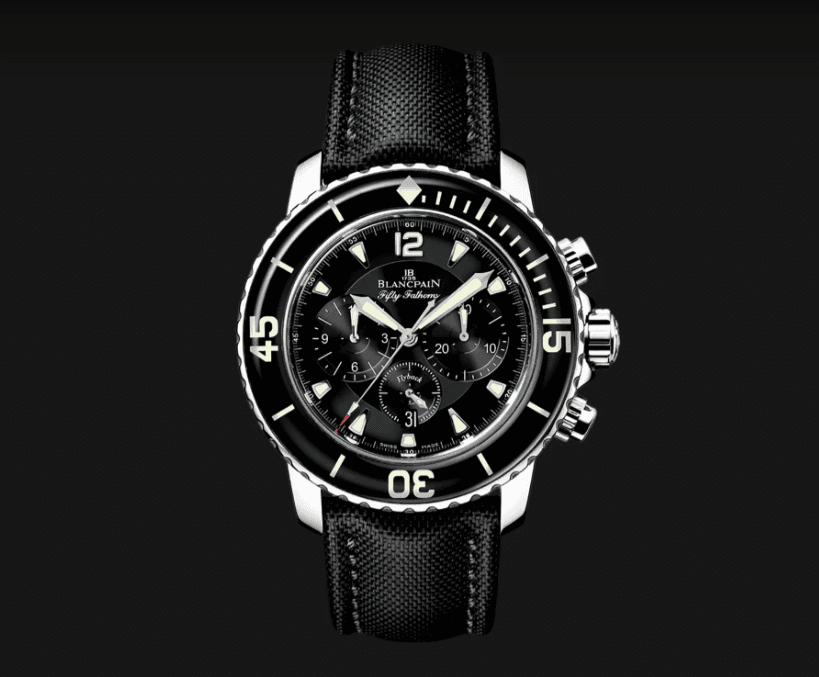
Future Prospects: Innovation Within Tradition
As the Fifty Fathoms enters its eighth decade, Blancpain continues balancing innovation with heritage preservation. Future development likely will incorporate advanced materials, enhanced environmental resistance, and improved movement technology while maintaining the aesthetic and functional principles established by Jean-Jacques Fiechter in 1953. The collection's expansion into different size options and material choices reflects contemporary market demands while preserving essential character. This approach ensures the Fifty Fathoms remains relevant to new generations of diving enthusiasts while honoring its distinguished history.
No articles found

